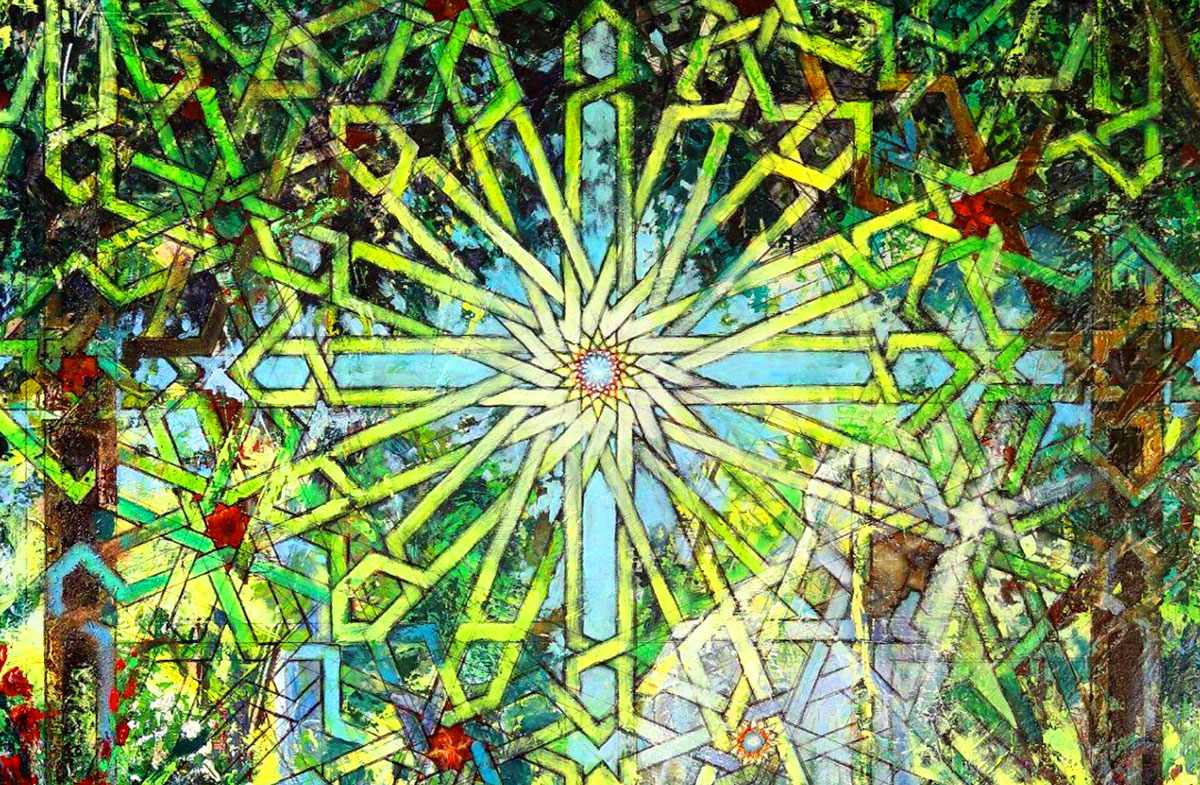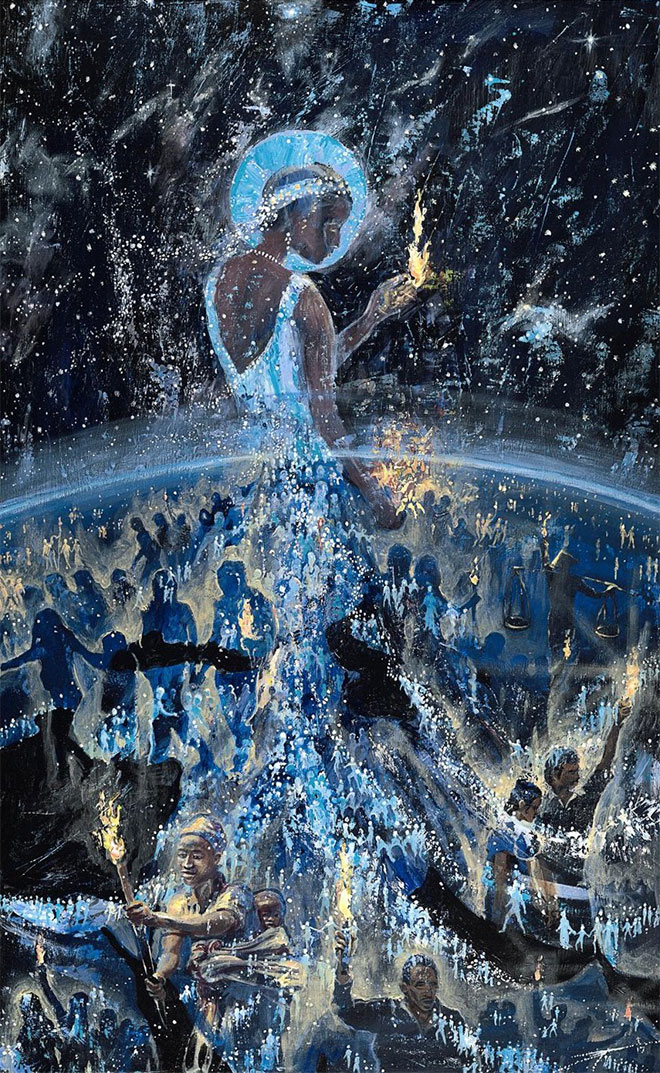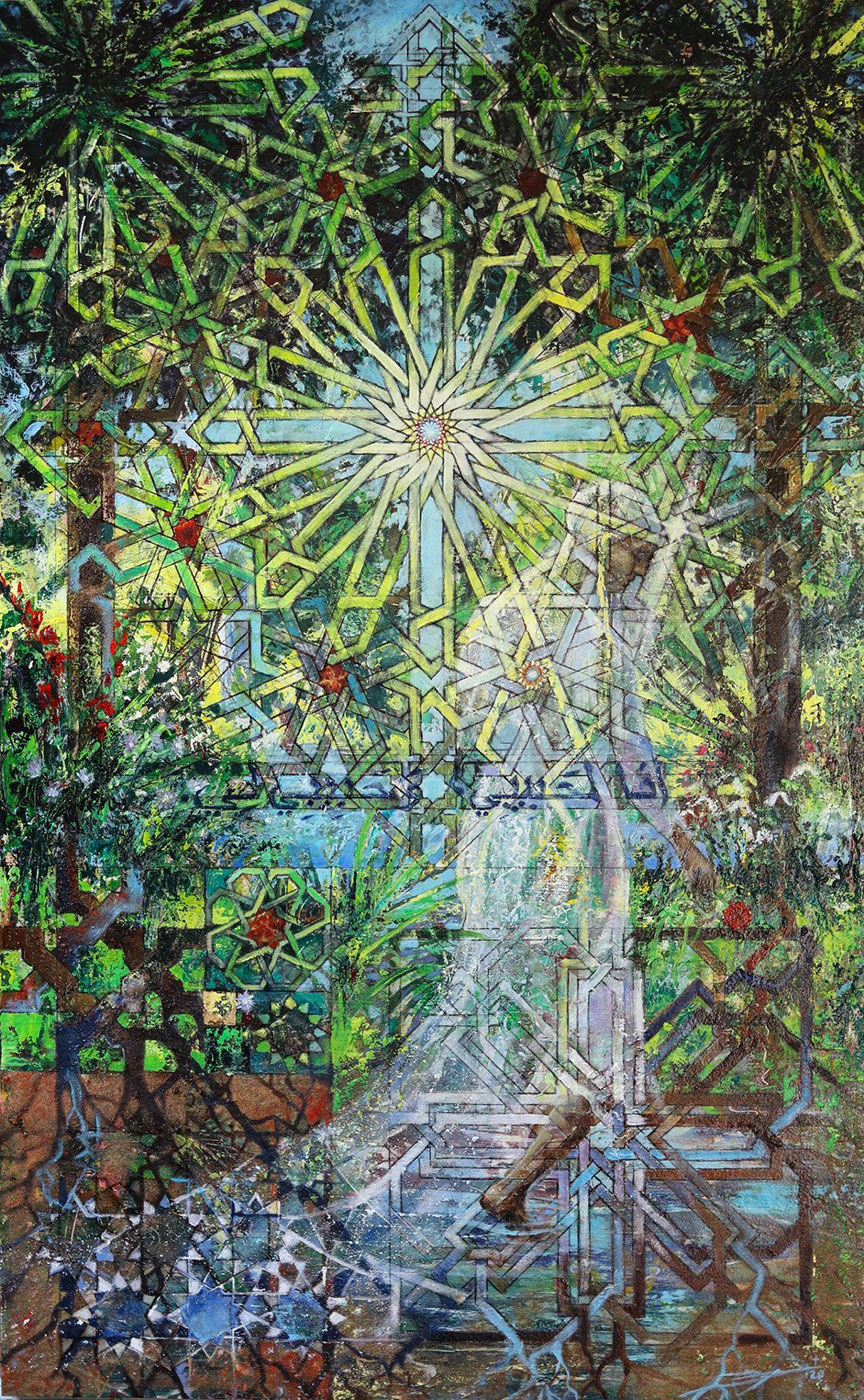Several years ago, I had the incredible privilege to partner with the Lausanne Movement and paint the four pillars of the mission statement. The second of those pillars, ‘a Christ-centered church for every community’, came in the form of the global Bride of Christ, the church.
Depicting the unified Body of Christ across the entire world and across all time, the Bride is the ultimate meta-narrative example of the people of God fulfilling their purpose. In the painting, the Bride is standing on a map of Israel, symbolizing the new heavenly Jerusalem in which Christ will be united with his Bride. The faithful of every tongue, tribe, and nation are streaming in to create her dress, God’s people from all of time and space.
A few years after painting for the Lausanne Movement, I was approached by The Truth Collective, an outreach ministry that calls Christian women to invite our Muslim friends to know Jesus. The Truth Collective wanted to feature ‘The Bride’ as the central emblem of their traveling art gallery to celebrate each woman’s worth and true identity in light of Christ’s love.
One part of The Truth Collective’s ministry is to train Christian women to host tea in the relational context of their homes—a common Muslim tradition—in order to build relationship. Despite deep differences, these Christian and Muslim women share many common concerns about motherhood, worth, identity, and marriage, and these universal concerns create authentic places for love to be displayed and gospel conversations to naturally unfold.
In a similar way, as I began to dialogue with founder Jami Staples and her team about ‘The Bride’ painting, I realized something new would need to unfold. Rather than simply print a large-scale reproduction or repaint a second version of the original, we quickly decided it would be powerful to customize a new Bride painting, incorporating elements from Islamic tradition.
I naively expected this would be an easy painting. I should have known by now that as a spiritual artist I am not the source of the best of my inspiration. God doesn’t simply create his work from me, but first he creates work in me, changing me, then produces his work through me as a conduit.
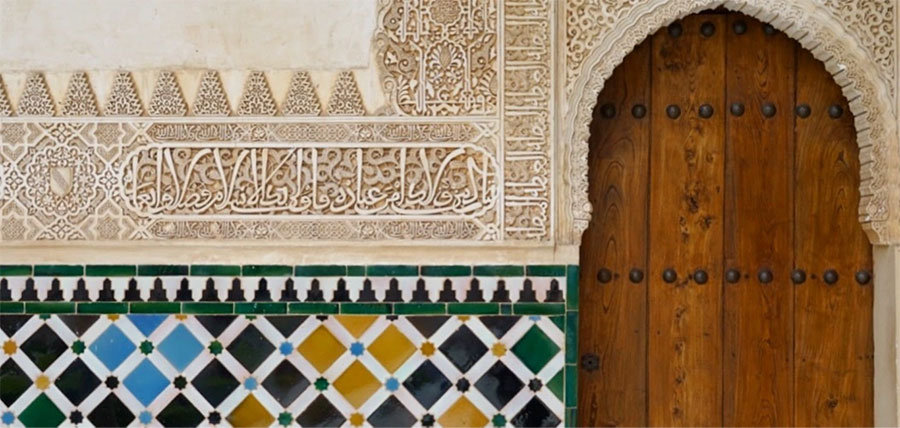
In order for me to artistically engage an entirely different and unfamiliar Islamic tradition, I needed to spend time with it and learn to love it. So I did this as I was uniquely equipped and inspired to do: through the Islamic artistic tradition.
Leaning into my years of teaching AP Art History as a current high school teacher, I went back to the classic Islamic artistic heritage of over a millennium. I studied the beautiful palaces of Alhambra in Spain, where so many of the most iconic Islamic tessellations adorn the hallowed walls. Since conservative Muslim traditions forbid any graven images referencing anything human or animal, Islamic designs are built upon mathematical patterns (tessellations), Kufic Arabic script, or floral designs.

I chose to embrace all three of those elements in this new painting of the Bride, now titled ‘The Beloved’ from the verse in Song of Songs: ‘I am my beloved’s, and my beloved is mine’ (6:3). That title verse folds through the waist of the figure in the painting in Arabic script—a metaphor that God’s love is spoken in every language and cultural expression.
During my research and re-creation of the Alhambra tessellations, I also came to deeply know and embrace the concept of construction lines. To lay the base of the artwork, ancient Muslim artists would establish an invisible foundation built upon circles and lines. Using the same series of these foundational construction lines, a countless number of possible designs can be created on top of the foundation by simply including or excluding certain components.
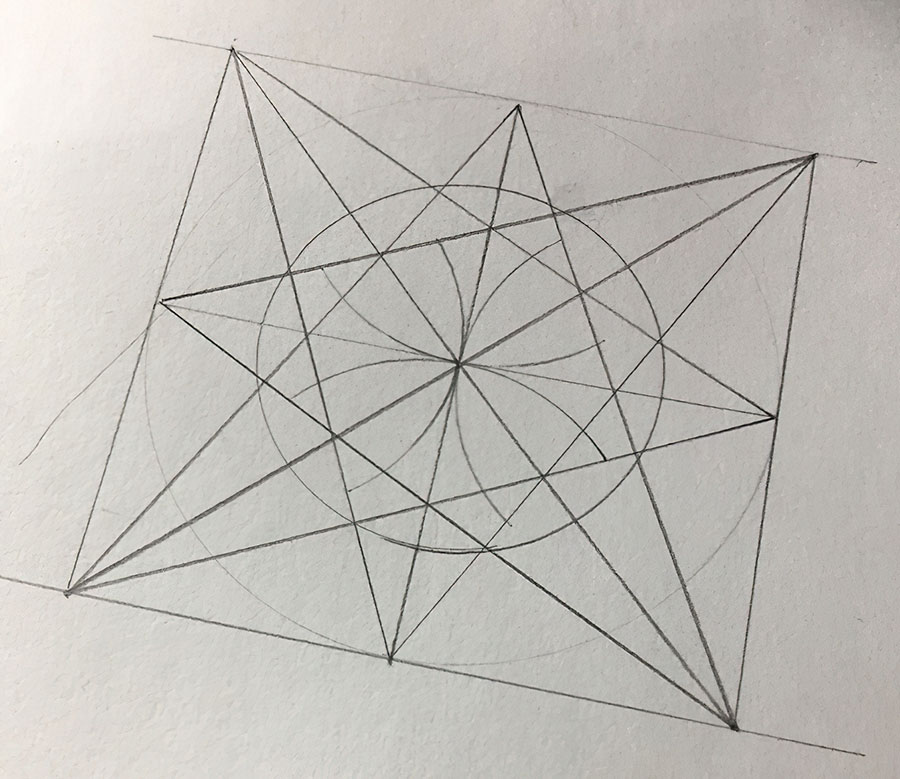
Once a pattern is chosen from the construction line, it can then be replicated in every direction—‘tessellating’—to make an infinitely repeating pattern. Not only does the replicated shape repeat, but the negative space between the images becomes a repeating pattern as well. Islamic tradition believes this visual pattern beautifully expresses divinity’s balance of order and complexity.
While designs will appear to be related to one another if they come from the same construction lines, once you change the underlying parent construction lines, every pattern produced thereby changes, and a totally new infinitely repeating pattern is established.
I found this to be such a profound metaphor of how the Holy Spirit changes our ‘construction lines’ from our innermost spirit, to our heart, soul, mind, and strength, producing a new eternal course for our lives. We who have dedicated our lives to sharing the gospel of Christ know that in truth, to accept Jesus as Lord and Savior is to categorically alter the invisible foundation of reality upon which our lives are built: every decision, priority, desire, and purpose. That is why we are not simply repaired by conversion, but described in 2 Corinthians 5:17 as a ‘new creation’: recreated in Christ’s likeness. That is why I was painting this work for my Muslim family, that their spiritual construction lines might be reshaped by Christ’s original design.
As a prophetic metaphor, I decided that rather than impose the Beloved onto these patterns, it was more appropriate to discover her within them. The ‘Beloved’ of Christ grew from the foundation of these preliminary mathematical tessellations, and I found great delight discovering the organic shapes of her form and that of her surroundings from within the construction lines carpeting the base of the painting.
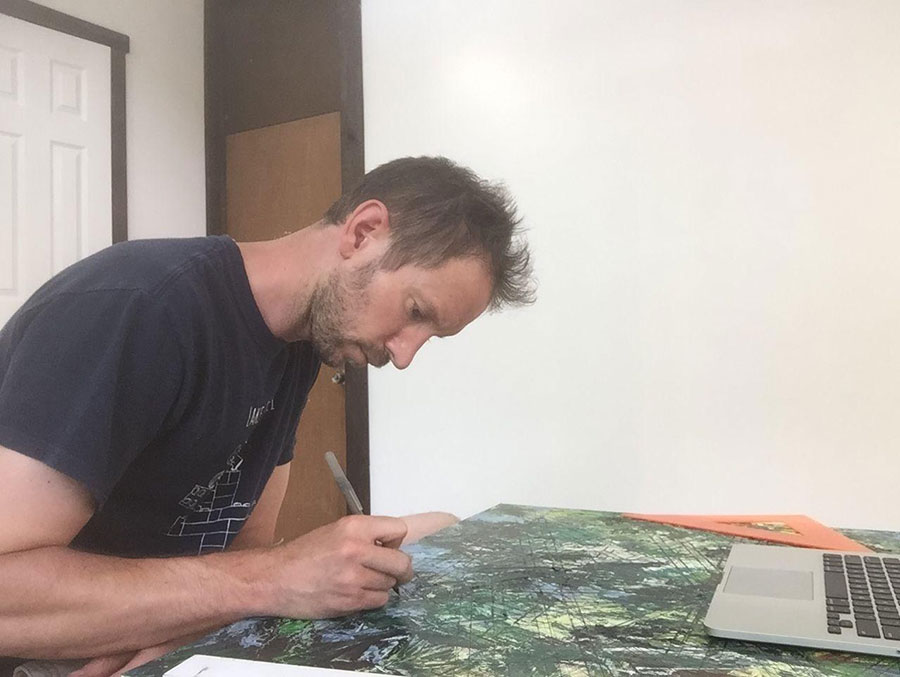
It was a slow process, and after setting aside the expectation that I would finish within my original schedule, I embraced the methodical and time-consuming process. I got lost in the work, and felt a newfound affinity for an entirely new aesthetic of beauty, the distinctly different cultural heritage of the Islamic world (as opposed to the European tradition that shaped my artistic heritage).
Into this new context ‘The Beloved’ emerged, the Bride of Christ in her beauty and strength, but no longer confined to my default aesthetic or cultural tradition. She was built from new construction lines. As she is the fulfillment of every tribe and tongue, I can imagine how she might be painted differently for every different culture, so that each would recognize in her their distinct contribution to her appearance.
One day however, we will all see her fully revealed in the heavenly reality of consummated perfection, and we will marvel that while each of us will recognize pieces of her, none of us could foresee or comprehend her total beauty.
This entire experience was a reminder that my construction lines are pliable, and that the Holy Spirit is still conforming me into the likeness of Christ. From God’s word we know the church is also under development, and the construction lines of our collective formation are still in need of being re-formed to appropriately mirror Christ. As we are told in Ephesians 4:13, ‘This will continue until we all come to such unity in our faith and knowledge of God’s Son that we will be mature in the Lord, measuring up to the full and complete standard of Christ’ (NLT).
Therefore, the unique role of every kingdom-hearted artist, poet, writer, actor, or musician is to expose our unacknowledged cultural construction lines and consider a renewed Christlike pattern to replace them. It is the universal call upon all of us as ambassadors of Christ, in whatever sphere of culture we operate in, to humbly, pliably, and collectively remain ‘under construction’ while God builds his Bride in and through us.
